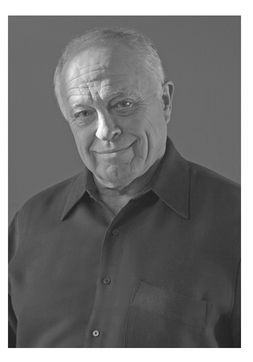Cambodia's Curse (56 page)
Authors: Joel Brinkley
and Khmer Rouge tribunal
and Lon Nol
and mission in Cambodia
refugees in
and Vietnam
University system.
See also
Education
See also
Education
UNTAC.
See
UN Transitional Authority in Cambodia
See
UN Transitional Authority in Cambodia
U.S. Ambassador to Cambodia.
See
Mussomeli; Quinn; Ray; Rodley; Twining; Wiedemann
See
Mussomeli; Quinn; Ray; Rodley; Twining; Wiedemann
U.S. Congress
and congressional hearing
U.S. Embassy
and corruption
and grand corruption report
U.S. Securities and Exchange Commission
U.S. Senate
U.S. Senate Foreign Operations Appropriations Subcommittee
U.S. Senate Foreign Relations Committee
U.S. State Department
USAID.
See
Agency for International Development
See
Agency for International Development
Uth Chhorn
Var Huoth
Veng Sereyvudh
Vickery, Michael
Victim outreach program
Video conferencing system
Vietnam
and boat people
and Cambodia, withdrawal from
change in
and China
and economic renovation
education in
and foreign aid
and Khmer Rouge
occupation of
refugees in
rice cultivation in
road building in
and Thailand
and United Nations
and United States
Vietnam War
Vietnamese boat people
Viey Savet
Village life
Violence.
See
Brutality/violence
See
Brutality/violence
Voting
War (1997)
The Warrior Heritage
(Seanglim Bit)
(Seanglim Bit)
Wealth
Weelen, Paul
Welfare
Westmoreland, William
WHO.
See
World Health Organization
See
World Health Organization
Who Killed Chea Vichea?
(film)
(film)
Widyono, Benny
Wiedemann, Kent
and baby trade
and donor community
and election (2002)
and human rights
and Khmer Rouge tribunal
and land seizures
and Rainsy
Women.
See also
Domestic violence; Rape
See also
Domestic violence; Rape
World Bank
and corruption
and deforestation
and education
and forest concessions
and land seizures
World economic crisis (2008)
World Food Program
World Health Organization (WHO)
Xu Dunxin
Yang Saing Koma
Yash Ghai
Yeng Virak
Yim Chay Lin
Yim Choy
Yoeun Chantho
Yorn Than
Youk Chhang
Zepp, Ray
Zhou Daguan
Zhou Enlai
Zoellick, Robert
ABOUT THE AUTHOR AND PHOTOGRAPHER

Joel Brinkley
is a professor of journalism at Stanford University, a position he took in 2006 after a twenty-three-year career with the
New York Times
. There he served as a reporter, editor, and foreign correspondent. He won a Pulitzer Prize for his coverage of the fall of the Khmer Rouge regime in Cambodia in 1979.
is a professor of journalism at Stanford University, a position he took in 2006 after a twenty-three-year career with the
New York Times
. There he served as a reporter, editor, and foreign correspondent. He won a Pulitzer Prize for his coverage of the fall of the Khmer Rouge regime in Cambodia in 1979.
At Stanford, Brinkley writes an op-ed column on foreign policy that appears in dozens of newspapers and Web sites in the United States and around the world each week, syndicated by Tribune Media Services.
He is a native of Washington, D.C., and a graduate of the University of North Carolina at Chapel Hill. He began his journalism career at the Associated Press and over the following years worked for the
Richmond (Va.) News Leader
and the
Louisville Courier-Journal
before joining the
Times
in 1983.
Richmond (Va.) News Leader
and the
Louisville Courier-Journal
before joining the
Times
in 1983.
At the
New York Times
, Brinkley served as Washington correspondent, White House correspondent, and chief of the Times Bureau in Jerusalem, Israel. He spent more than ten years in editing positions, including
political editor in New York. In Washington he served as foreign editor, projects editor, and investigations editor following the September 11 attacks. He also served as political writer in Baghdad during the fall of 2003 and as foreign affairs writer in Washington.
New York Times
, Brinkley served as Washington correspondent, White House correspondent, and chief of the Times Bureau in Jerusalem, Israel. He spent more than ten years in editing positions, including
political editor in New York. In Washington he served as foreign editor, projects editor, and investigations editor following the September 11 attacks. He also served as political writer in Baghdad during the fall of 2003 and as foreign affairs writer in Washington.
Over the past thirty years Brinkley has reported from forty-six states and more than fifty foreign countries. He has won more than a dozen national reporting and writing awards. He was a director of the Fund for Investigative Journalism from 2001 to 2006. He is the author of five books and lives in Palo Alto, California, with his wife, Sabra, and two children, Charlotte and Veronica.
Jay Mather
has been a working photojournalist since 1972. He accompanied Brinkley to Cambodia in 1979 and shared the Pulitzer Prize.
has been a working photojournalist since 1972. He accompanied Brinkley to Cambodia in 1979 and shared the Pulitzer Prize.
His interest in documentary photography began while he was a Peace Corps volunteer in Malaysia. That led to jobs at newspapers in Denver, Louisville, and Sacramento.

During his career he has covered a wide range of subjects and people from the rich and famous to the poor and nameless. Mather received the Robert F. Kennedy Photojournalism Award and was a Pulitzer finalist in 1991 for his project on the centennial of Yosemite National Park. He was the photographer for the
Sacramento Bee
’s 1992 project “The Sierra in Peril” that won the Pulitzer Prize for Public Service.
Sacramento Bee
’s 1992 project “The Sierra in Peril” that won the Pulitzer Prize for Public Service.
Mather also worked extensively with the Sacramento Ballet as their production photographer and documented the company’s first international tour to China in 2007. He now lives with his wife, Diane, in Sisters, Oregon, where he volunteers his photographic work for the Sisters Folk Festival, among other organizations and events.

PublicAffairs is a publishing house founded in 1997. It is a tribute to the standards, values, and flair of three persons who have served as mentors to countless reporters, writers, editors, and book people of all kinds, including me.
I. F. STONE, proprietor of
I. F. Stone’s Weekly
, combined a commitment to the First Amendment with entrepreneurial zeal and reporting skill and became one of the great independent journalists in American history. At the age of eighty, Izzy published
The Trial of Socrates,
which was a national bestseller. He wrote the book after he taught himself ancient Greek.
I. F. Stone’s Weekly
, combined a commitment to the First Amendment with entrepreneurial zeal and reporting skill and became one of the great independent journalists in American history. At the age of eighty, Izzy published
The Trial of Socrates,
which was a national bestseller. He wrote the book after he taught himself ancient Greek.
BENJAMIN C. BRADLEE was for nearly thirty years the charismatic editorial leader of
The Washington Post.
It was Ben who gave the
Post
the range and courage to pursue such historic issues as Watergate. He supported his reporters with a tenacity that made them fearless and it is no accident that so many became authors of influential, best-selling books.
The Washington Post.
It was Ben who gave the
Post
the range and courage to pursue such historic issues as Watergate. He supported his reporters with a tenacity that made them fearless and it is no accident that so many became authors of influential, best-selling books.
ROBERT L. BERNSTEIN, the chief executive of Random House for more than a quarter century, guided one of the nation’s premier publishing houses. Bob was personally responsible for many books of political dissent and argument that challenged tyranny around the globe. He is also the founder and longtime chair of Human Rights Watch, one of the most respected human rights organizations in the world.

For fifty years, the banner of Public Affairs Press was carried by its owner Morris B. Schnapper, who published Gandhi, Nasser, Toynbee, Truman, and about 1,500 other authors. In 1983, Schnapper was described by
The Washington Post
as “a redoubtable gadfly.” His legacy will endure in the books to come.
The Washington Post
as “a redoubtable gadfly.” His legacy will endure in the books to come.

1
In pursuit of this and related questions,
Foreign Affairs
hired me to write an article. Portions of this book first appeared in
Foreign Affairs
.
Foreign Affairs
hired me to write an article. Portions of this book first appeared in
Foreign Affairs
.
2
In 2010, Porter said he had been waiting many years for someone to ask him, for publication, about his early views of the Khmer Rouge. “I’ve been well aware for many years that I was guilty of intellectual arrogance,” he said. “I was right about the bloodbath in Vietnam, so I assumed I would be right about Cambodia.”
3
Soon after, a Cambodian friend showed Cindy Coleman that many of her former clients were on the lists of people killed at Tuol Sleng—many but not all, she quickly noted. She kept looking.
4
A few academics did maintain an interest in the Cambodian people, but they were interested only in the dead. In the few years after the fall of the Khmer Rouge, some people who styled themselves as Cambodia experts tried to estimate the Khmer Rouge death count. Of course, nobody had counted, and Cambodia had not taken a census since 1962. These people, academics mostly, included some early admirers of the Khmer Rouge. They got into heated arguments about whether some of the dead were victims of the Khmer Rouge—or the American bombing campaign. Several of them finally derived a variety of estimates, ranging from about 1.7 to almost 3 million. Journalists and writers then settled on the safest way to portray these estimates by writing “at least 1.7 million.” That became the accepted number. In fact, research for the Khmer Rouge trial in more recent times put the number at about 2 million.
Other books
Alaska Twilight by Colleen Coble
Hard Target by Marquita Valentine
After the Moon Rises by Bentley, Karilyn
Jude's Salvation: This Love Series by Smith, Nicole
Suspicion of Guilt by Tracey V. Bateman
Rebound by Cher Carson
The Haunting of Toby Jugg by Dennis Wheatley
Beside Still Waters by Viguié, Debbie
Whetted Appetites by Kelley, Anastacia